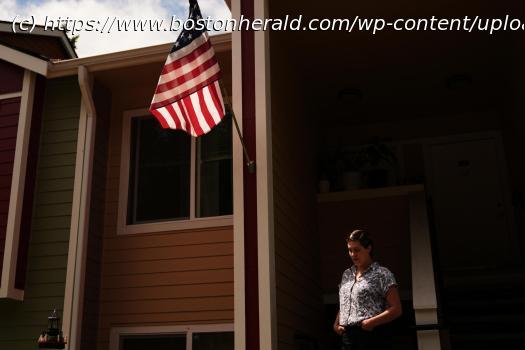A Trump administration proposal could put more than a million low-income households at risk of losing their government-subsidized housing, according to new research from New York University,
Havalah Hopkins rarely says no to the chain restaurant catering gigs that send her out to Seattle-area events — from church potlucks to office lunches and graduation parties.
The delivery fees and tips she earns on top of $18 an hour mean it’s better than minimum-wage shift work, even though it’s not consistent. It helps her afford the government-subsidized apartment she and her 14-year-old autistic son have lived in for three years, though it’s still tough to make ends meet.
“It’s a cycle of feeling defeated and depleted, no matter how much energy and effort and tenacity you have towards surviving,” Hopkins said.
Still, the 33-year-old single mother is grateful she has stable housing — experts estimate just 1 in 4 low-income households eligible for U.S. Department of Housing and Urban Development rental assistance get the benefits. And now Hopkins is at risk of losing her home, as federal officials move to restrict HUD policy.
Amid a worsening national affordable housing and homelessness crisis, President Donald Trump’s administration is determined to reshape HUD’s expansive role providing stable housing for low-income people, which has been at the heart of its mission for generations. The proposed changes include a two-year limit on the federal government’s signature rental assistance programs.
At a June congressional budget hearing, HUD Secretary Scott Turner argued policies like time limits will fix waste and fraud in public housing and Section 8 voucher programs.
“It’s broken and deviated from its original purpose, which is to temporarily help Americans in need,” Turner said. “HUD assistance is not supposed to be permanent.”
But the move to restrict such key subsidies would mark a significant retreat from the scope of HUD’s work. Millions of tenants moved in with the promise of subsidized housing for as long as they were poor enough to remain qualified, so time limits would be a seismic shift that could destabilize the most vulnerable households, many unlikely to ever afford today’s record-high rents.
New research from New York University, obtained exclusively by The Associated Press, found that if families were cut off after two years, 1.4 million households could lose their vouchers and public housing subsidies — largely working families with children. This would lead housing authorities to evict many families, the report said.
A broad time limit would cause “substantial disruption and dislocation,” the it said, noting the policy is largely untested and most of the few housing authorities to voluntarily try it eventually abandoned the pilots.
A break from HUD’s long-held purpose of helping house the poor could also jeopardize its contracts with private landlords, who say they’re already feeling the uncertainty as public housing authorities from Seattle to Atlanta announce they’re scaling back in anticipation of federal funding cuts.
Critics fear the restriction could derail those working towards self-sufficiency — defeating the goal time-limit supporters hope to achieve.
HUD spokesperson Kasey Lovett pushed back on the NYU study.
“There is plenty of data that strongly supports time limits and shows that long-term government assistance without any incentive disincentivizes able-bodied Americans to work,” Lovett said in a statement. She primarily cited statistics suggesting low employment among HUD-subsidized tenants.
Hopkins said the policy would likely leave her and her son homeless in an economy that often feels indifferent to working poor people like her.
“A two-year time limit is ridiculous,” she said. “It’s so disrespectful. I think it’s dehumanizing — the whole system.”Working families are most at risk
Researchers from the Housing Solutions Lab at New York University’s Furman Center analyzed HUD’s data over a 10-year period and found about 70% of households who could be affected by a two-year limit had already been living on those subsidies for two or more years.
Домой
United States
USA — Science 1.4M of the nation’s poorest renters risk losing their homes with Trump’s...






